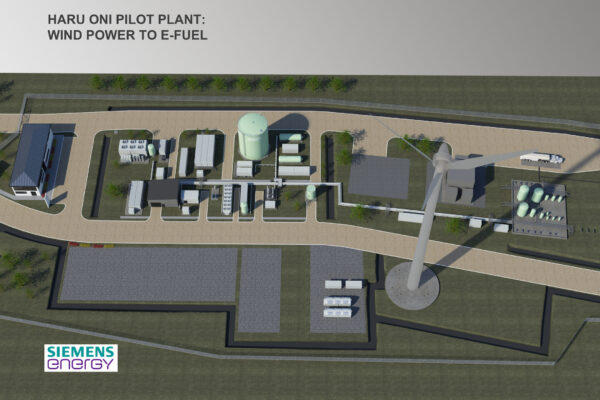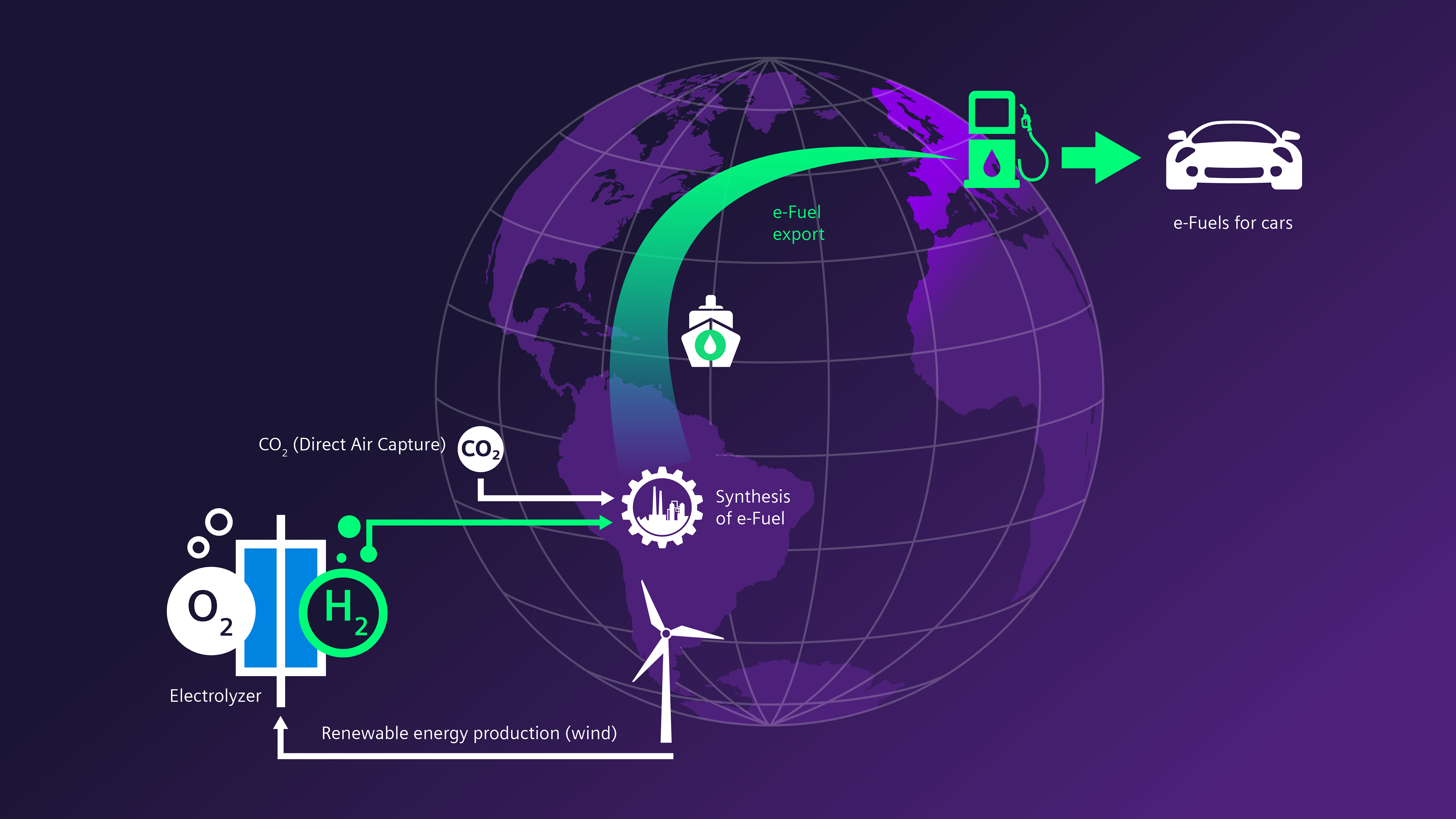
Porsche, Siemens Energy build plant for climate-neutral eFuels
In the pilot phase, around 130,000 liters of eFuels will be produced as early as 2022. In two steps, capacity is then to be increased to around 55 million liters of eFuels per year by 2024 and to 550 million liters per year by 2026. Porsche is the main purchaser of the green fuel. Other partners in the project are the energy company AME and the oil company ENAP from Chile as well as the Italian energy company Enel.
The Haru Oni pilot project in Chile’s Magallanes province is taking advantage of the excellent wind conditions in the south of the country to produce climate-neutral fuel with the help of green wind power. As part of Germany’s national hydrogen strategy, Siemens Energy is receiving a grant of around 8 million euros for the project from the German Federal Ministry of Economics and Energy.
As the main purchaser of the fuel, Porsche is planning to use eFuels from Chile in special showcase projects in a first phase. These include the use of eFuels in Porsche motorsport vehicles, in the Porsche Experience Centers and, in the future, in production sports cars. The sports car manufacturer is initially investing around 20 million euros in these projects.

From Porsche’s point of view, eFuels can be a useful addition to electric mobility. One prerequisite is that they are produced using sustainable energy. “The advantages lie in their ease of use,” explains Porsche CEO Oliver Blume. “eFuels can be used in combustion engines and plug-in hybrids and make use of the existing filling station network. By using them, we can make a further contribution to climate protection”.
Siemens Energy is co-developer of the project and, as a system integrator, covers the entire value chain – from power generation with Siemens Gamesa wind turbines to the production of green hydrogen and its conversion into synthetic fuel. The company’s flexible PEM (Proton Exchange Membrane) electrolysis is ideally suited to the use of volatile wind energy.
AME is the main developer and owner of the project company HIF (Highly Innovative Fuels). Enel is co-financier of the plant with a focus on wind energy and electrolysis. ENAP supports the project with operating personnel as well as maintenance and logistics.
Due to the climatic conditions for wind energy and the resulting low electricity prices, Chile has a very high potential for the production, export and local use of green hydrogen in international comparison. In order to produce it, electrolysers use wind power to split water into its components oxygen and hydrogen. In a second step, it is planned to filter CO2 from the air and combine it with the green hydrogen to produce synthetic methanol. The result: renewable methanol, which will be converted into fuel with the support of Exxon Mobil. The MTG (methanol-to-gasoline) technology licensed from Exxon Mobil will be used for this purpose.
More information: https://www.siemens-energy.com/global/en/offerings/renewable-energy/hydrogen-solutions/haru-oni.html
Related articles:
Poll: All drive systems of today will still be relevant in 10 years
Auto slump causes Bosch profits to collapse
Bosch braces for massive job cuts, bets on fuel cell
 If you enjoyed this article, you will like the following ones: don't miss them by subscribing to :
eeNews on Google News
If you enjoyed this article, you will like the following ones: don't miss them by subscribing to :
eeNews on Google News




